2025 Porsche Taycan Review: Looks the Same but Is Much Improved
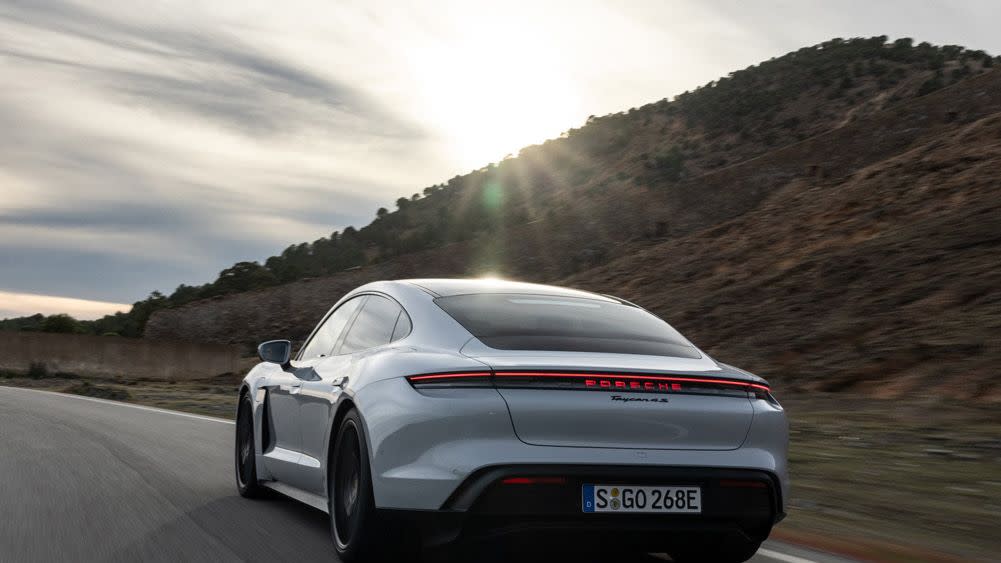
The biggest knock against Porsche's first EV, the 2020 Taycan, was its lackluster EPA range figures. Those initial all-important numbers ranged from just 192 to 203 miles. We specify EPA here because in our real-world, 75-mph highway range testing, the Taycan has been one of the biggest overachievers and among the minority of EVs that surpass their EPA range at highway speeds. For example, we saw 280 miles from a rear-drive sedan with the larger battery pack that had a 225-mile EPA figure. With year-over-year updates, the EPA numbers grew to between 206 and 246 miles for the 2024 model year.
Now, with the Taycan's significant overhaul for 2025, Porsche looks to fully address the range issue by increasing range by over 20 percent to as much as 35 percent, depending on the model. Part of the gain is due to more energy in the two available battery packs, but there's a host of other efficiency improvements that pitch in as well. In addition, power, DC fast-charging rate, and acceleration performance are improved across the board, and air springs are now standard, while active dampers are optional. The Taycan was already the most crisp-responding and dynamically satisfying EV to drive, and Porsche isn't looking to give up any ground there either. Despite all the upgrades underneath, however, the revised Taycan doesn't look much different from the outside.
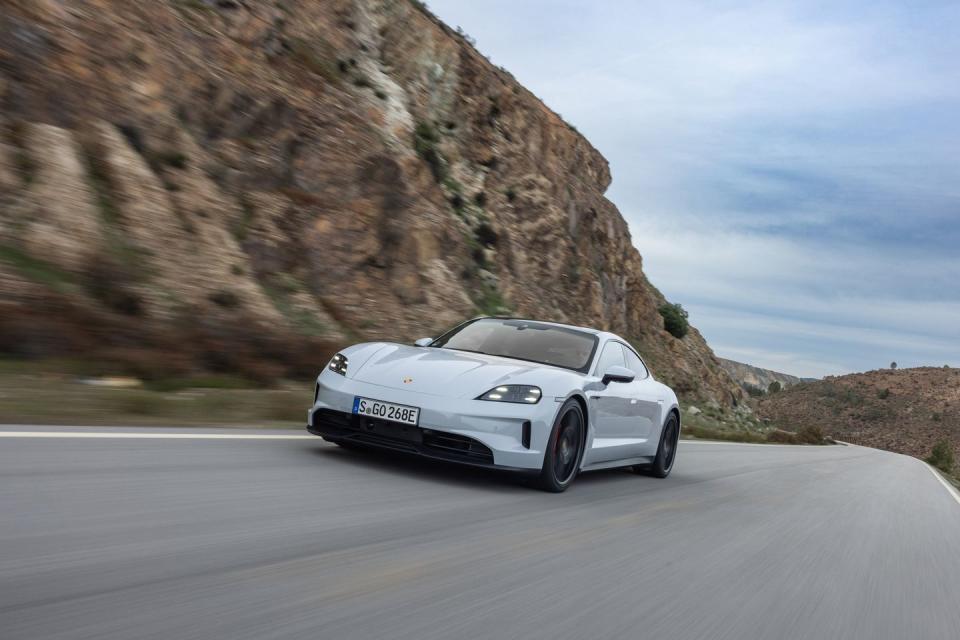
Minor Appearance Tweaks
We have no issue with a substantial mid-cycle update primarily focused on mechanical rather than cosmetic changes. In fact, those are often more difficult and/or more expensive. There are minor changes to the front fenders, as well as new HD matrix LED headlights with 32,000 individual pixels—a $1700 option on lesser trims, standard on Turbo and above, although they don't have full functionality in the U.S.—but they aren't likely to get your attention.
Sitting in the driver's seat, the interior also comes across as nearly identical, although there's some new Apple CarPlay functionality that allows more functions, such as tuning radio stations, setting the climate control, or adjusting ambient lighting, to be done without leaving the CarPlay environment. The optional 10.9-inch passenger screen ($1490) has a filter to block the driver's view, so it now allows video streaming. But the view angle is sensitive for passengers, too, which makes the screen always seem like you're looking at it through polarized sunglasses, and it isn't as bright or vivid as the center screen.
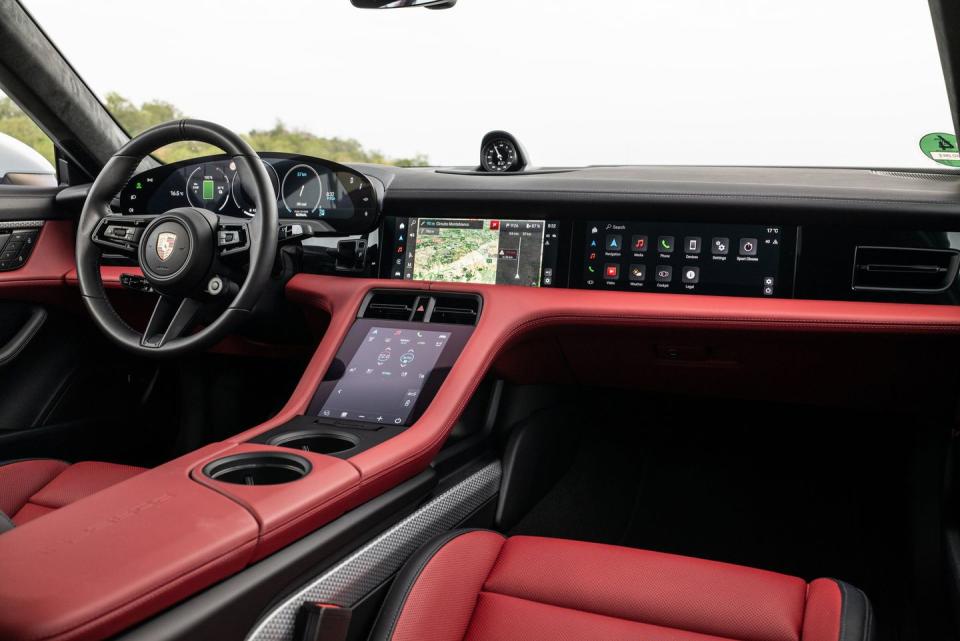
Rear-seat space hasn't changed and remains adult-habitable but not stretch-out generous. Depending on how far the driver has the front seat slid back, rear-seat entrants might have to unnaturally twist their sneakers to get them into the footwell, although there's adequate space once they do so.
More Potent Powertrains
Now, on to the more important stuff. The 2025 Taycan lineup—on sale this summer, from the base 402-hp, rear-drive sedan to the 938-hp Turbo S Cross Turismo wagon—gets considerably more range and a bump in performance, along with an available new active suspension that it shares with the Panamera E-Hybrid. The base price swells by nearly $9000 to $101,395, while the Turbo S is $14,445 more expensive starting at $210,995. Cross Turismo wagon variants—we continue to love that Porsche offers this body style—are about $3000 to $7000 more expensive than their sedan counterparts. There's also the new top-dog 1019-hp Turbo GT model that's already set records at the Nürburbring and Laguna Seca that we'll review separately. The biggest acceleration gain is on the base model, which hits 60 mph a claimed 0.6 second quicker, bringing it into the mid-4s, while the 871-hp Turbo and 938-hp Turbo S models shed a few tenths while gaining about 200 peak horsepower.
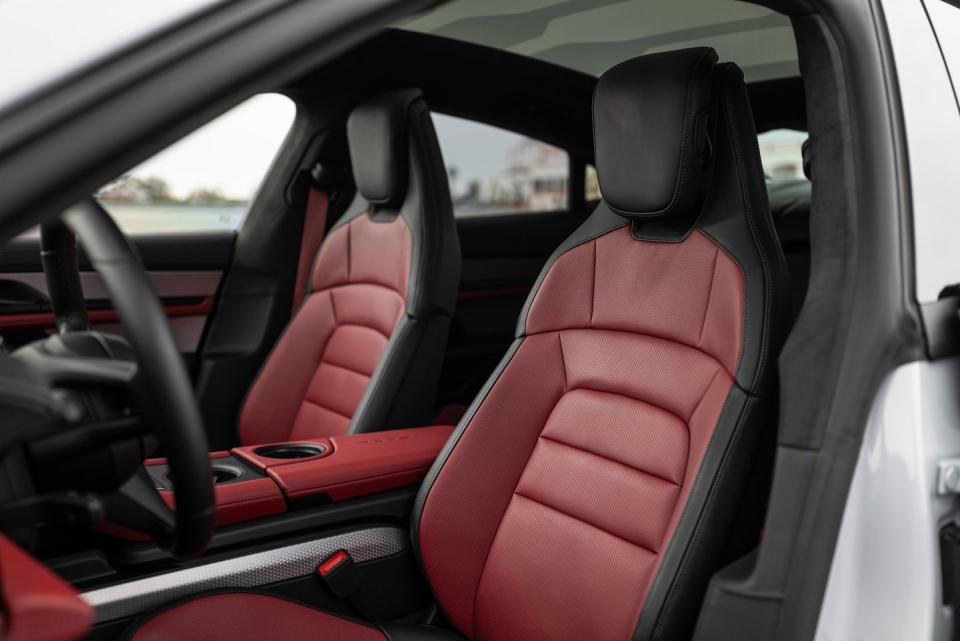
As before, there are still two battery options with either 336 or 396 cells supplied by LG in 28 or 33 modules that are housed in the same enclosure. However, a higher proportion of nickel in the lithium-ion battery's nickel/cobalt/manganese makeup makes for considerably more energy capacity and faster charging. The base battery grows from 71.0 to 82.3 kilowatt-hours, which is nearly the capacity of the larger battery before. The optional pack, still called Performance Battery Plus, grows from 83.7 to 97.0 kilowatt-hours. And the underbody protection for the pack switches from aluminum to a composite to shed 22 pounds.
Faster Charging
The new battery chemistry also enables faster charging, up to 320 kilowatts for the large pack and 270 kilowatts for the small pack, gains of 50 and 45 kilowatts, respectively. But it's far more than just the peak—the area under the charging curve has grown substantially, as we witnessed when we fast-charged a prototype Taycan and saw an average charging rate more than 50 percent faster than before. Also, the battery temperature window in which these rates can be achieved has widened considerably. Aiding in increasing the availability of the charge rate is a higher-capacity air-conditioning compressor, which switches to 800 volts from 400 before. Remember, Porsche was early in the 800-volt game, and much of the supplier base is now catching up. However, Porsche has gotten rid of the 19.2-kW Level 2 charger; all Taycans now have an 11.0-kW onboard charger.
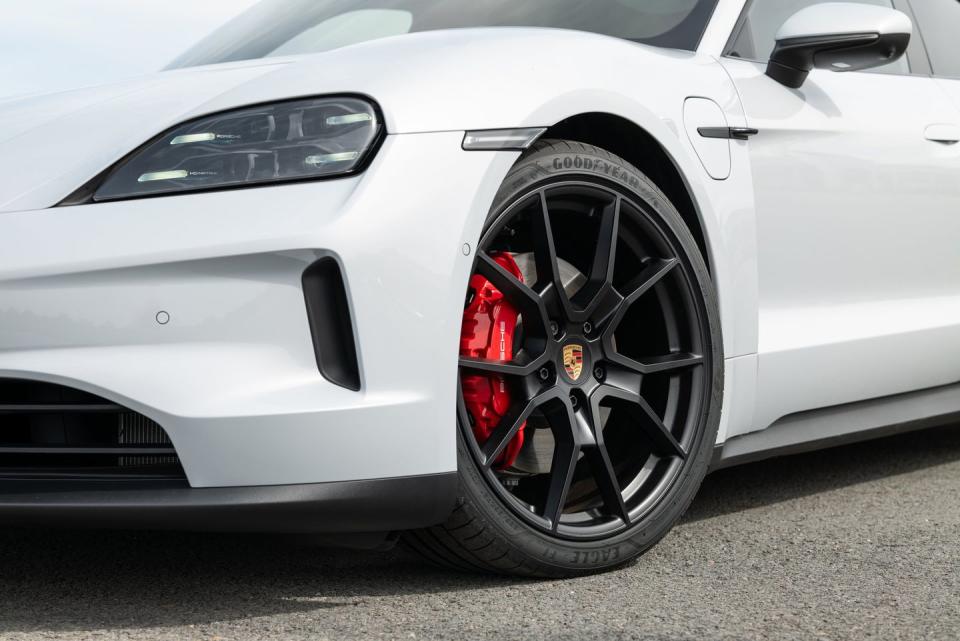
Due to the larger battery, it's no surprise that the Taycan's range grows, but that only explains about half the gain. Porsche has also wrung additional miles with tires with less rolling resistance (the most efficient 21-inch wheel-and-tire package alone gains 25 miles of range on the European WLTP cycle), driveline efficiencies, and a weight reduction of up to 57 pounds. U.S. EPA figures aren't out yet, but based on the European figures we expect them to range from 250 miles for the 4S with the small battery on the low end to 325 miles for the most efficient rear-drive model with the larger pack. While still a permanent-magnet design, the rear motor is completely new and makes up to 107 horsepower more than before yet is a claimed 23 pounds lighter. Details such as the layout and orientation of the magnets—now in a V-shaped pattern—contribute to improved efficiency.
A Trick New Suspension
The new active-suspension option, called Porsche Active Ride, is a $7140 option on all-wheel-drive variants, but it also forces you to add Porsche Torque Vectoring Plus for another $1500. The suspension does without anti-roll bars, and each damper has a hydraulic pump to continuously add or subtract force at each corner based on driver inputs and road conditions. It's constantly drawing power, even to simply maintain the Taycan's ride height, and it can't recuperate energy. During the most extreme use, the suspension alone can draw 34 horsepower. The system operates at 800 volts, versus 400 volts on the Panamera Hybrid.
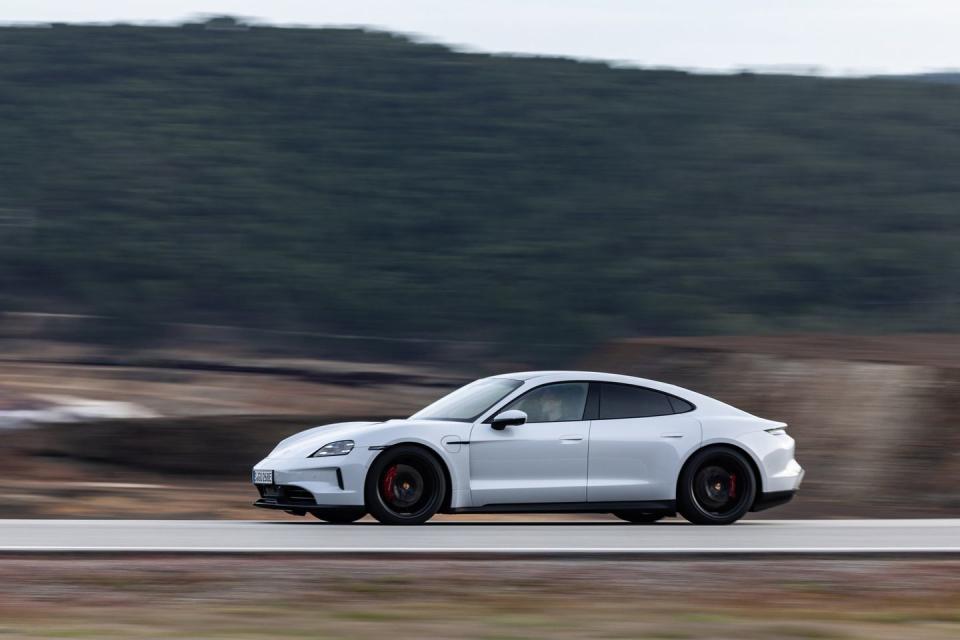
It also can raise the suspension 2.1 inches while parked—it does so almost startingly quickly—to ease entry and exit after you pull a door handle. There are settings (available only in the Normal drive mode) to do the opposite of what normally happens; lean into turns or pitch forward under acceleration and back under braking. As with other similar systems, such as Mercedes's Active Body Control, we found those modes to feel wonky and unnatural and preferred having them switched off. But the normal work it does is remarkable, such as keeping the body exceptionally flat and smothering a lot of road undulations. We didn't fully appreciate all the compensating it was doing on our drive on unfamiliar roads around Seville, Spain, until we hopped into a car with the base suspension, which also now employs air springs and adaptive dampers. The base car feels much busier over the road. It's not bad, and it's still a great-driving, well-tuned car, but you feel all of the perturbations that are completely erased by the active setup.
Porsche is sticking with its strategy of doing regenerative braking almost exclusively in conjunction with the application of the brake pedal, rather than any kind of one-pedal driving mode. (There's a setting for a very modest amount of regen when coasting.) But that's probably why the brake-pedal feel is still a little grabby and nonlinear right at initial tip-in where regen initiates. Porsche remains correct that it's more efficient to coast than regen, so that should be the priority. We find it annoying when EVs don't offer a coast mode, because it requires an annoying amount of precision with your throttle foot to navigate the usual ebbs and flows of highway traffic without one.
The Taycan has the same great steering feel and feedback and overall dynamic rightness, but now with substantially more range, faster DC charging, and quicker acceleration. All in all, the 2025 Taycan has received a pretty substantial overhaul, even if you can't tell by looking.
You Might Also Like

